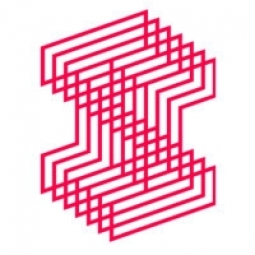Applicable Industries
- Aerospace
- Cement
About The Customer
The customer in this case study is United Technologies, a multinational conglomerate that produces a wide range of high-technology products and services to the aerospace and building systems industries. In 2018, United Technologies acquired Rockwell Collins, a major manufacturer of aircraft interior systems, avionics, and defense solutions. The acquisition resulted in the creation of Collins Aerospace, the largest aerospace supplier in history. United Technologies sought to build a strong, unique brand identity for Collins Aerospace that would honor the legacy of both companies while also embracing a promising future in the aerospace industry.
The Challenge
In 2018, United Technologies completed a $30 billion acquisition of Rockwell Collins, resulting in the creation of Collins Aerospace, the largest aerospace supplier ever. The challenge was to build a new brand identity for Collins Aerospace that would honor the long legacy of both companies while also embracing a promising future. The aerospace industry is known for its complex, over-designed renderings and blue skies imagery. However, Collins Aerospace wanted to break away from this norm. They wanted a brand that would reflect the complexity of their products in a simple, sleek, and stark manner. The brand also needed to emphasize the company's commitment to partnership and customer-driven solutions, highlighting the personal dedication and vast expertise that would fuel their mission of redefining aerospace.
The Solution
Working with Iris, a company with experience in launching United Technologies brands, Collins Aerospace opted for a minimalist approach to their brand. The foundation of the brand was the 'Passionate Purpose', a framework used by Iris to uncover and define a brand's reason for being. For Collins Aerospace, this was 'Unleashing Intelligence. Elevating Relationships. Redefining Aerospace.' The brand was manifested through high contrast black & white photography, a limited palette, and simple lines. This approach was a departure from the traditional aerospace industry branding, moving from a manufactured and corporate look to a profound and promising one. The copy also played a significant role in the brand's identity. The NATO alphabet, commonly used in aviation, was redefined, changing 'alpha bravo Charlie' to 'alpha bravo Collins.' This alphabet construct became central to the launch campaign.
Operational Impact

Case Study missing?
Start adding your own!
Register with your work email and create a new case study profile for your business.
Related Case Studies.

Case Study
System 800xA at Indian Cement Plants
Chettinad Cement recognized that further efficiencies could be achieved in its cement manufacturing process. It looked to investing in comprehensive operational and control technologies to manage and derive productivity and energy efficiency gains from the assets on Line 2, their second plant in India.

Case Study
Airbus Soars with Wearable Technology
Building an Airbus aircraft involves complex manufacturing processes consisting of thousands of moving parts. Speed and accuracy are critical to business and competitive advantage. Improvements in both would have high impact on Airbus’ bottom line. Airbus wanted to help operators reduce the complexity of assembling cabin seats and decrease the time required to complete this task.

Case Study
Aircraft Predictive Maintenance and Workflow Optimization
First, aircraft manufacturer have trouble monitoring the health of aircraft systems with health prognostics and deliver predictive maintenance insights. Second, aircraft manufacturer wants a solution that can provide an in-context advisory and align job assignments to match technician experience and expertise.

Case Study
Aerospace & Defense Case Study Airbus
For the development of its new wide-body aircraft, Airbus needed to ensure quality and consistency across all internal and external stakeholders. Airbus had many challenges including a very aggressive development schedule and the need to ramp up production quickly to satisfy their delivery commitments. The lack of communication extended design time and introduced errors that drove up costs.

Case Study
Developing Smart Tools for the Airbus Factory
Manufacturing and assembly of aircraft, which involves tens of thousands of steps that must be followed by the operators, and a single mistake in the process could cost hundreds of thousands of dollars to fix, makes the room for error very small.




